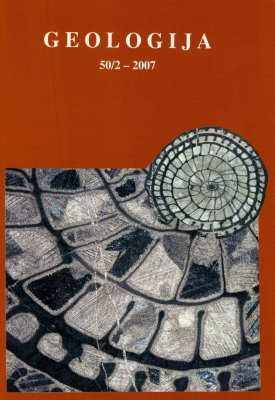Distribution and origin of nitrates in the groundwater of Ljubljansko polje
DOI:
https://doi.org/10.5474/geologija.2007.032Abstract
The presence of nitrates, an important pollutant of drinking water sources, at present doesn't represent an environmental burden that would demand immediate remedial measures in the aquifer of Ljubljansko polje. Nevertheless their presence indicates an anthropogenic influence that can not be neglected. The article discusses the spread of nitrates in the aquifer of Ljubljansko polje and gives an estimation of the influence of two important nitrate sources, the agricultural and urban land use. The distribution of nitrates in the area is also discussed and the concentration changes with time are examined closely. The most important nitrate source in the groundwater is determined on the basis of nitrate-nitrogen isotope study. The results are correlated to the known land use of the urban area. Sampling for the present study was performed from the autumn 2002 to the summer 2004. The sampling locations were active wells of the public water supply, industrial wells, sampling wells of the existing monitoring network and the Sava river. The results show an uneven distribution of nitrates in the Ljubljansko polje aquifer. Areas with a concentration of up to 40 mg/1 can be found, whereas the values in the river bank are low and comparable to those in the river water. On the average the concentration ranges from 20 to 25 mg/l. The nitrate concentration depends largely on the location in the aquifer and does not show significant changes during the time of the research projects, with some exceptions which confirm a local input of nitrates from the surface in the vicinity of the sampling site. The most positive groundwater nitrate δ15N values were found in the area where the groundwater flows from the densely populated area. The least positive values are found in the groundwater, where the sampling site is surrounded by entirely agricultural land. The spatial variation of the nitrogen source is important. The δ15N values seem to be more sensitive to nitrate input than the nitrate concentration itself and show changes with time. When the sampling site is far away from the source of contamination the amplitudes of NO3 concentration and δ15N are lower. The reason can be found in the homogenization of the groundwater flow.Downloads
How to Cite
Urbanc, J., & Jamnik, B. (2007). Distribution and origin of nitrates in the groundwater of Ljubljansko polje. Geologija, 50(2), 467–475. https://doi.org/10.5474/geologija.2007.032
Issue
Section
Articles

